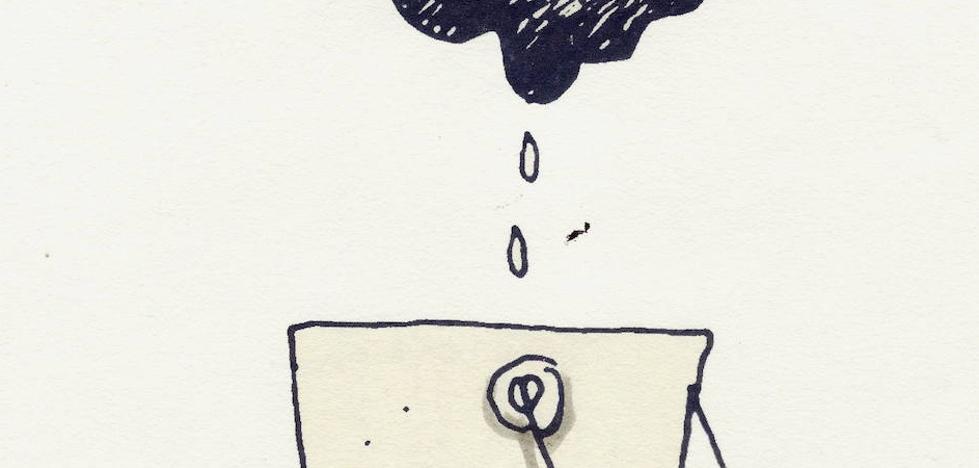The day they tried to kill Fumio Kishida, the president of Japan, between checks and a bit of hysteria, Carolina, the kids, and I went north to the Tokyo Imperial Palace, where there’s a Shinto shrine worth 2,500,000 is prayed. , the spirit of dead soldiers, including those of 14 class A war criminals. Called Yusukuni Jinja, it is one of the holiest in the city, a monument to the memory of Japan since the heroes who fought until the last Shogun of the Edo period , leading to the reign of Emperor Meiji, who started this cult in 1869 in memory of those warriors. It’s overwhelming. It all starts when you enter the temple through a giant torii, the gate of the Shinto shrines. You understand that you are in a sacred precinct that includes the Yushukan Museum. I know many of the military museums and war memorials in the world, but this one is different because it pays homage to 14 genocidals, those believed responsible for the horror caused by Japan in the Sino-Japanese War and in World War II, not better than those convicted at Nuremberg. In a place that should be sinister, there is a spiritual peace. Children in dark blue uniforms walk orderly along the esplanade. Every August 15, celebrating the anniversary of the end of World War II, Yusukuni is the country’s spiritual memorial center, much to the chagrin of China and Korea, the victims of Japanese imperialism. Japanese prime ministers have been forced to stop paying public and private tributes. When I was younger I wouldn’t have gone in, just as I wouldn’t go to a monument to Hitler, Franco or Stalin, but last week I walked through it in silence and bought the catalogue, a manual on the history of Japan ranging from samurai swords to swords, photos of thousands of fallen soldiers on Iwo Jima or in the Philippines. Reading it should be compulsory for every historian. The attack on Pearl Harbor is described as something inevitable, an act of defense by Japan against the unacceptable interference of the United States in Chinese and Korean affairs. For a European this is incomprehensible, but I am talking about Japanese nationalism, the purest and hardest of them all. The story from the coast, even today, is that they were right; his most dishonorable attacks on neighboring countries are “incidents” carried out to liberate Asia and put each country in its place, which is the essence of Japanese philosophy of life, according to Ruth Benedict in “The Chrysanthemum and the Sword,” the study in order from the US military to understand the strange Japanese as they took Tokyo. At one point in the museum, a letter appears beautifully calligraphed but full of brown spots. It is the farewell written by General Anami Koreicha Mikoto, Minister of War and – for us – the chief criminal. In the early morning of August 15, 1945, when the Emperor decided to surrender Japan, he wrote it, took out his katana and committed sepuku. As commander in chief, he wanted to continue fighting the Americans with bamboo spears when weapons ran out. The dishonor of surrender was not acceptable and he did it before going against the son of heaven. The brown on the card is his dried blood. Our Japanese culture is often built on cinema, from Kurosawa’s samurai to Tarantino’s Japo-Mex or Takeshi Kitano’s extensive blood, but an Edward Zwick commercial starring Tom Cruise counts for something. In “The Last Samurai,” as a key warrior dies (I won’t do a “spoiler”), he sees the cherry tree’s leaves fall in ecstasy. The cherry blossom is such a passion for them that they measure the percentage of the bloom. The fact is that as he dies he enjoys that bloom, just as Benedict uses the chrysanthemum as a complement and in contrast to the sword to define them in that hyper-ordered world where everything takes its place. They never lost the war, they surrendered for the future of Japan. It’s complex, but it has an indisputably exotic reason. The Allies decided to let the Emperor live and run his government and high command to structure the future under McArthur’s command, assuming that the next enemy would be the USSR. They also understood that the Emperor’s death could bring things unseen, from total mass suicide to fights to the final katana. Japan did not surrender after the bombs on Hiroshima and Nagashaki. Until 9 days later they fought with hardly any weapons, ships or planes. In the museum even a kamitake hangs from the ceiling. They could have killed every last child, but they obeyed the Emperor’s speech on the radio. There is a distance between the hero and the criminal for us, but not for them, although I sometimes wonder what would have happened to those who bombed Dresden if the others had won the war. Those 14 class A war criminals are heroes to a part of Japan attached to that distant, spiritual and austere world, along with ancestral obligations like On, Gimu, Giri or Ko-on, something deeper than history itself, something that is lost goes into the behavior of millennia. I dropped this case to arrive in Spain while Jose Antonio was being exhumed from his sanctuary and a handful of people with flags were battling the police. To live.
Source: La Verdad
I am George Kunkel, an author working for Today Times Live. I specialize in opinion pieces and cover stories that are both informative and thought-provoking – helping to shape public discourse on key issues. My work is regularly featured across the network’s many platforms, including print media and social media.



